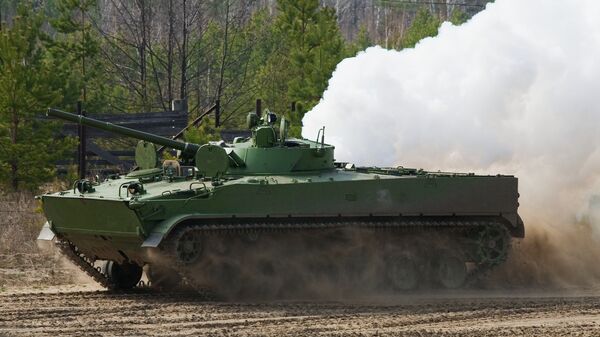MOSCOW. (RIA Novosti military commentator Ilya Kramnik) - Russia is currently undergoing a controversial military reform. The entirely new troop structure and tables of organization are being hotly debated. Recent media reports concerning planned tank force reductions have triggered various comments, including panicky predictions.
Media articles quoting Interfax reports involving an anonymous Defense Ministry source say the tank force will be reduced more than ten-fold, namely, from over 20,000 tanks to just 2,000 tanks. The news has sparked off a heated debate.
However, all sensational aspects disappear if we study the situation more closely. Although the tank force will be reduced and overhauled substantially, the reform does not envision ten-fold cuts.
At present the Russian Army has about 22,000 tanks, including more than 15,000 at storehouses. This makes up for just over 6,000 combat-ready tanks. Permanent readiness units have between 1,000 and 1,500 tanks.
In the next ten years, army divisions will be replaced with permanent readiness brigades and battalions operating 2,000 to 2,300 combat-ready main battle tanks whose number will increase somewhat. Training units will have several hundred more tanks. Another 3,000-4,000 tanks will remain at storehouses. Consequently, the Russian Army will have a total of 6,000 to 7,000 tanks.
Although the Russian tank force will be reduced three-fold, the specifications of operational tanks, the qualitative and quantitative gap between Russia and its theoretical enemies and the reform's long-term effect on national defense capability remain unclear.
The Russian industrial situation makes it possible to clarify the first aspect. The T-90 main battle tank, a modified version of the T-72 tank, is currently being manufactured for the Russian Army. The T-72 modernization program will bring these tanks up to the current standard. As a result, T-64 and T-80 tanks featuring numerous Ukrainian-made components will have to be scrapped.
The T-72 and its successor, the T-90, will probably form the mainstay of the Russian tank force. Production of the T-95 tank, due to be unveiled in 2009, could be launched in the next two or three years.
But how will Russia's tank force compare with those of neighboring countries? Virtually all major powers plan to reduce their tank units many times over.
NATO forces in Europe will retain about 2,000 combat-ready tanks and will store another 2,000 by 2020.
China will have about 4,000 to 5,000 tanks, including 2,000 modern tanks, by 2020. Although the Russian tank force will be dwarfed by those of its two most powerful neighbors, NATO and China, it is highly unlikely that Moscow will have to simultaneously fight both of them. Such a hypothetical conflict would inevitably escalate into a nuclear war. Consequently, the role played by tank units would diminish greatly.
Although anti-tank weapons are being improved all the time, tanks still dominate the battlefield due to their firepower, mobility and thick armor. Tanks remain a vital asset enhancing the flexibility, mobility and firepower of army units during local conflicts.
The opinions expressed in this article are the author's and do not necessarily represent those of RIA Novosti.



